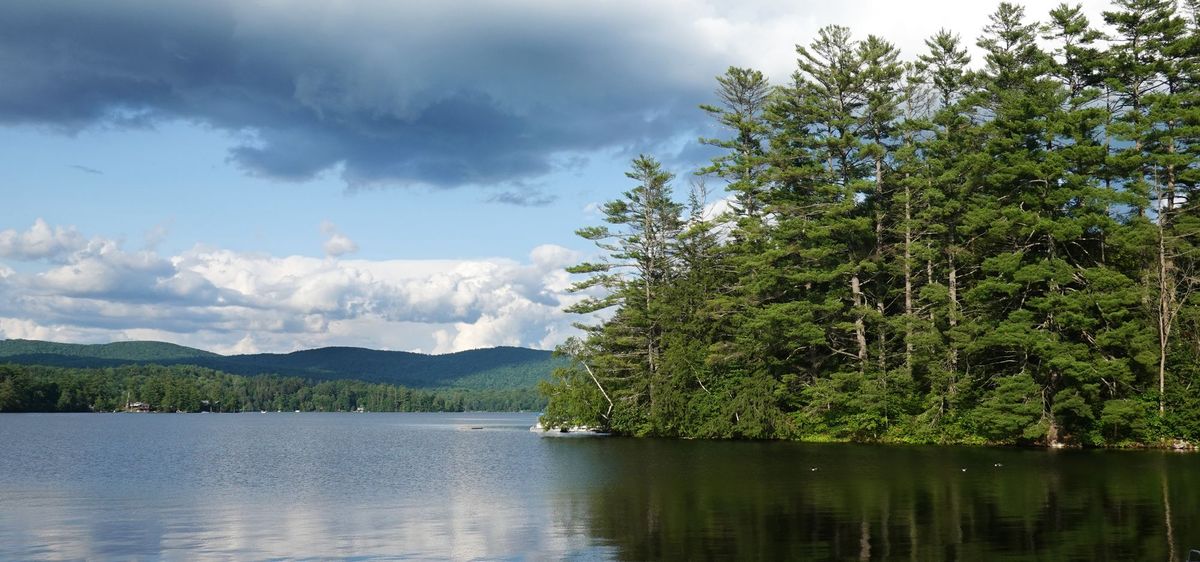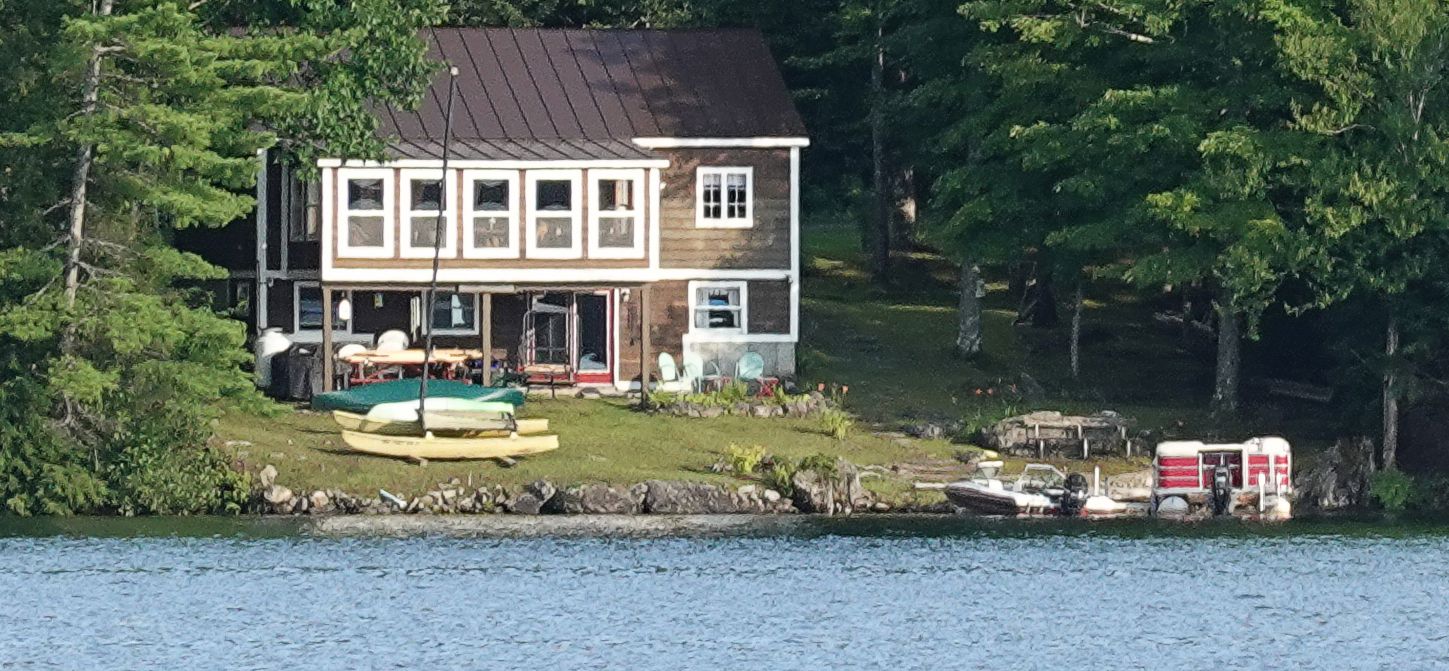Give "LakeWise" a chance on Lake Fairlee
Will Treasure Island lead the way?

At their meeting on July 19th, the Thetford Selectboard heard a presentation from Lisa Niccolai describing the LakeWise Program. Lisa is the Conservation Specialist with the White River Natural Resources Conservation District, where she handles all aspects of watershed management and conservation. Incidentally, she is trained in Environmental Studies and holds a Yale Master's Degree in Forestry. One of her projects is to bring the LakeWise program to Orange County.
The health of a lake is determined by what flows into it. Unfortunately for Lake Fairlee, increasing amounts of nutrients like phosphate have been flowing into the waters, resulting in turbidity due to accelerated growth of algae. This hasn’t gone unnoticed at the State level. The VT Agency of Natural Resources has a mission in managing Vermont’s waters to “protect the best and restore the rest.” And it finds that Lake Fairlee increasingly needs restoration in three areas: nutrient levels in water must be reduced, shoreland and lake habitat needs improvement, and invasive species need better controls.
That’s where LakeWise comes in. The LakeWise program strives to prevent harmful substances from flowing into the lake by intercepting the polluted rain runoff through improved shoreline management. In a natural situation, the area surrounding a Vermont lake would be largely forested. Forest floors have a deep layer of duff — the remains of fallen leaves, pine needles, sticks, etc — that form a spongy, absorbent bed that is constantly replenished. The underlying soil is not compacted. Duff and soil act like a filter and absorb excess nutrients such as phosphate, wastes from animals, and all-too-common lake pollutants like herbicides and pesticides. A naturally vegetated shoreline is often an unkempt thicket, where trees and shrubs like alder, button bush, and sheep laurel compete for sunlight and stretch out over the water. This leaning vegetation provides shade, woody debris, and food to the shallow water ecosystem that is a keystone of lake biodiversity. A shoreline that is not protected by such vegetation is biologically impoverished. It is also open to erosion by waves and boat wakes. This releases sediment and nutrients, lowering water quality and boosting algal blooms.
Unfortunately, Lake Fairlee has become a victim of its own popularity. Shoreland forest and waterline thickets have been replaced in many areas by lakeside developments that espouse lawns. These mowed, grassy areas are more akin to paved surfaces than we realize. That’s because grading with heavy equipment and the frequent passage of mowers have compacted the soil. The Federal Environmental Protection Agency states: “a parking lot might be 95 percent impervious, a residential lawn might be 40 percent impervious and natural land covers are nearly 0 percent impervious. …Pollution caused by human activities is transported directly to waterbodies in storm events, rather than being filtered through soil.” Lawns may also contribute harmful substances directly to the lake in the form of "lawn chemicals" like fertilizer and broadleaf weedkiller.
The National Lake Assessment Study ranked Vermont lakes as the worst in the Northeast and well below the national average in the quality of their shallow water habitat. They concluded this was caused directly by lakeshore development.
Ideally a forested zone of 250 ft or more is necessary to filter pollutants, stabilize the shoreline, and offer a meaningful amount of habitat to aquatic life, birds, mammals, reptiles and amphibians.

LakeWise seeks to protect lakes by encouraging a change in the harmful practices used by lakeshore landowners. Its science-based methods have proved effective in restoring the health of lakeshores and the lake itself.
While it is important to reduce impervious surfaces like lawns and driveways near the water, Lisa understands that people expect to use their lakefronts. The goal is never a wild tangle of plants that blocks the view. In concert with LakeWise, The Federation of Vermont Lakes and Ponds has put together a planting guide with six garden templates — for example a "Pollinator Meadow Garden," an "Edible Beach Eden," or a "Public Beach Paradise" all using native plants. They also provide a general guide to best practices for landscape designs that benefit water quality, whether on level ground or on slopes.
LakeWise operates through neighbors showing neighbors and not by pressuring skeptical landowners. Lisa will approach those who understand that the health of Lake Fairlee is in decline and care about reversing this trend. Working with Thetford's Treasure Island seems like a good beginning. The Treasure Island Exploratory Committee is charged, among other things, with exploring the ecological health of the property. A significant swath out of TI's roughly ten acres is infrequently used and filled with mostly native trees and plants. Its long stretch of shoreline is naturally vegetated. This gem deserves careful stewardship. Lisa could also help TI to correct groundskeeping mistakes, such as when a leaf blower exposed bare soil near the water’s edge (a violation of the VT Shorelines Act), or to divert runoff from the parking lot that currently drains towards the lake. There are many places where beds of native plants would be beneficial.
If the Town follows Lisa’s recommendations, LakeWise will award Treasure Island a certification and will install an official sign. This would have educational value, both to TI visitors and, importantly, to other lake residents. A LakeWise certification would also open the door to more funds from the State Department of Environmental Conservation’s Watershed Action Plan.
Lake Fairlee’s health can be turned around with the help of lake-friendly shoreland management practices. Will Thetford’s Treasure Island lead the way, and will others follow? A majority of lakeside parcels may need to adopt these practices to significantly improve water quality.
Photo credit: Li Shen
